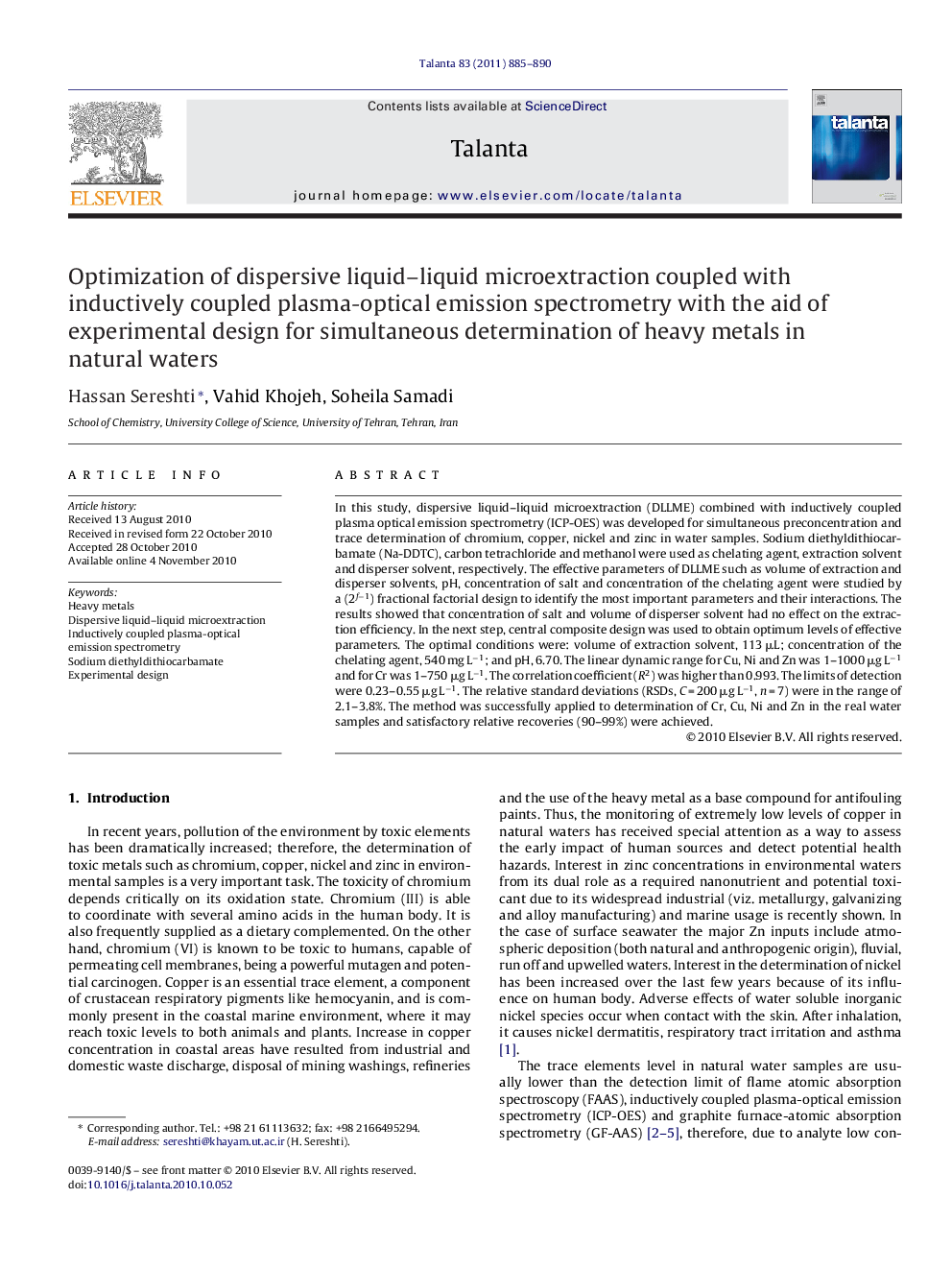| کد مقاله | کد نشریه | سال انتشار | مقاله انگلیسی | نسخه تمام متن |
|---|---|---|---|---|
| 1245056 | 969711 | 2011 | 6 صفحه PDF | دانلود رایگان |

In this study, dispersive liquid–liquid microextraction (DLLME) combined with inductively coupled plasma optical emission spectrometry (ICP-OES) was developed for simultaneous preconcentration and trace determination of chromium, copper, nickel and zinc in water samples. Sodium diethyldithiocarbamate (Na-DDTC), carbon tetrachloride and methanol were used as chelating agent, extraction solvent and disperser solvent, respectively. The effective parameters of DLLME such as volume of extraction and disperser solvents, pH, concentration of salt and concentration of the chelating agent were studied by a (2f−1) fractional factorial design to identify the most important parameters and their interactions. The results showed that concentration of salt and volume of disperser solvent had no effect on the extraction efficiency. In the next step, central composite design was used to obtain optimum levels of effective parameters. The optimal conditions were: volume of extraction solvent, 113 μL; concentration of the chelating agent, 540 mg L−1; and pH, 6.70. The linear dynamic range for Cu, Ni and Zn was 1–1000 μg L−1 and for Cr was 1–750 μg L−1. The correlation coefficient (R2) was higher than 0.993. The limits of detection were 0.23–0.55 μg L−1. The relative standard deviations (RSDs, C = 200 μg L−1, n = 7) were in the range of 2.1–3.8%. The method was successfully applied to determination of Cr, Cu, Ni and Zn in the real water samples and satisfactory relative recoveries (90–99%) were achieved.
Journal: Talanta - Volume 83, Issue 3, 15 January 2011, Pages 885–890